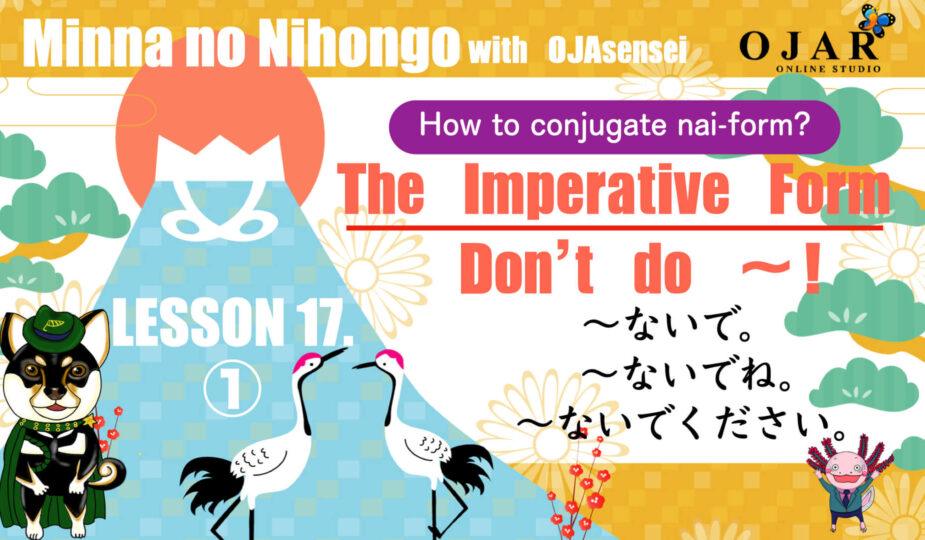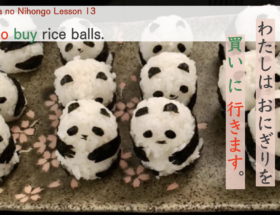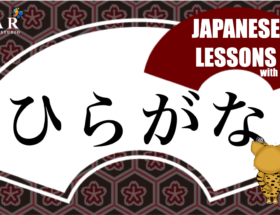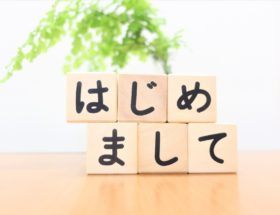こんにちは、みなさん おじゃちゃんです。Today’s lesson is; Minna no Nihongo 17 ① | The Imperative Form “Don’t do” in Japanese.
Can you say “Don’t touch this!” in Japanese? You can learn the imperative mood with the negative form in Japanese here!
Let’s get started!
Minna No Nihongo: Beginner 1, 2nd Edition (Japanese)
Customer Reviews: ★★★★☆
Publisher : 3A CORPORATION; 2nd Edition (March 16, 1998)
CONTENTS
1. Conjugating Verbs
Let’s learn how to conjugate verbs a little before you learn the imperative mood.
We are going to use nai-form in this lesson.
Do you remember?
You can learn the detail lesson in “The Verb Conjugation Group 1”!
You always need to think from jisho-form when you conjugate verbs.
■ How to conjugate nai-form?
The conjugation sounds of nai-form is different depending on the Verb Groups.
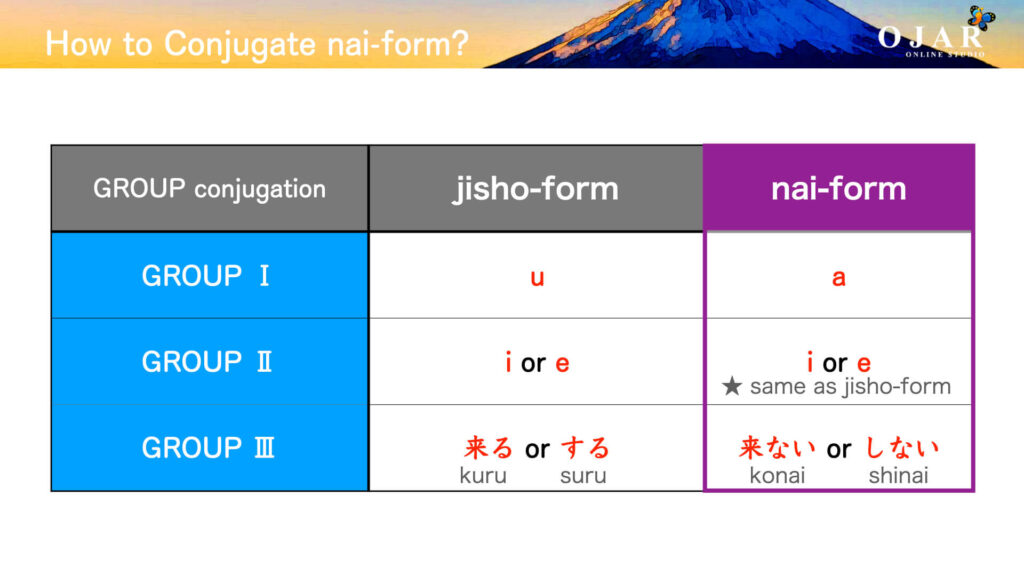
・The Verb conjugation | Group Ⅰ
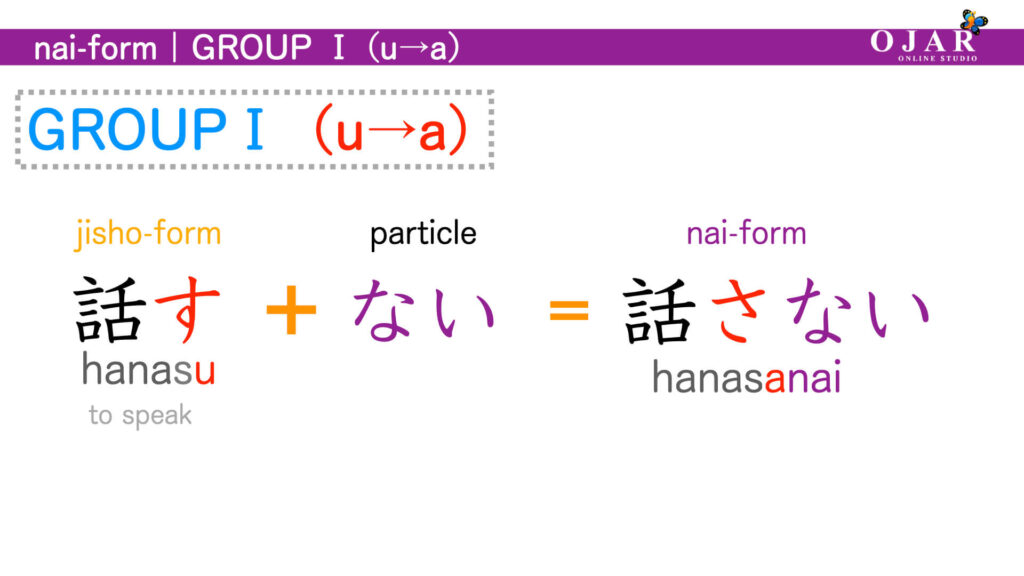
We conjugate jisho-form to nai-form by replacing “u sounds” with “a sounds”.
It changes the sounds depending on the rows of consonants.
| English | jisho-form | nai-form |
|---|---|---|
| to write | 書く kaku | 書かない kakanai |
| to speak | 話す hanasu | 話さない hanasanai |
| to wait | 待つ matsu | 待たない matanai |
| to die | 死ぬ shinu | 死なない shinanai |
| to line up | 並ぶ narabu | 並ばない narabanai |
| to read | 読む yomu | 読まない yomanai |
| to know | 知る shiru | 知らない shiranai |
| to say | 言う iu | 言わない iwanai |
・The Verb conjugation | Group Ⅱ
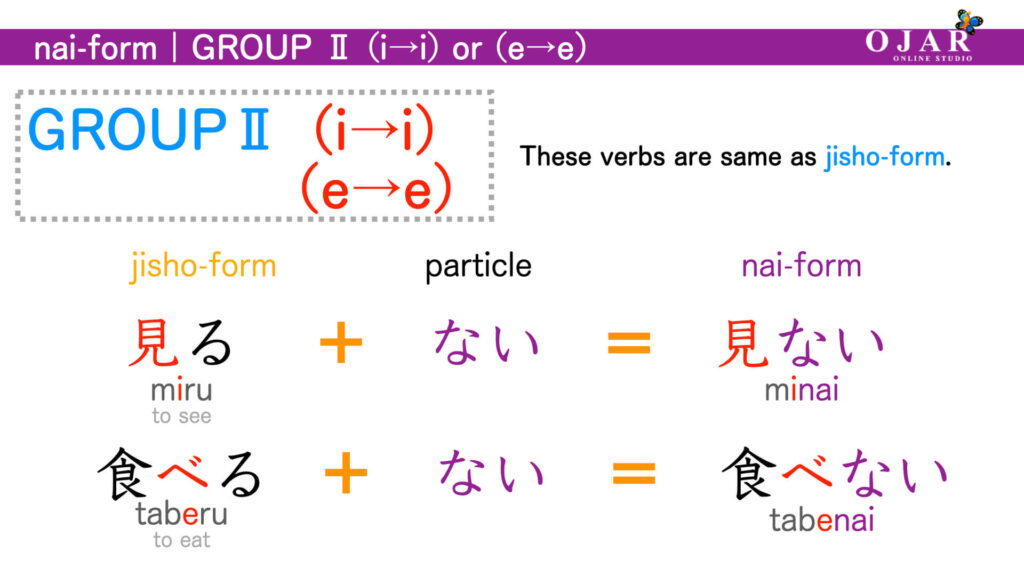
We conjugate Group Ⅱ verbs with “i sounds” or “e sounds”. These verbs don’t change at all. It’s very easy, right? You just add “ない” instead of the suffix.
・i-sounds column
| English | jisho-form | nai-form |
|---|---|---|
| to exist | いる iru | いない inai |
| to get up | 起きる okiru | 起きない okinai |
| to pass | 過ぎる sugiru | 過ぎない suginai |
| to see | 見る miru | 見ない minai |
| to borrow | 借りる kariru | 借りない karinai |
📖 The difference between 見ない and 見てない
見ない is 見る’s nai-form. 見てない means “I haven’t seen (yet).” Originally, 見てない is 見ていない. We usually omit “い” of 見ていない when we have a conversation. So 見ない and 見て(い)ない are a little different.
・e-sounds column
| English | jisho-form | nai-form |
|---|---|---|
| to answer | 答える kotaeru | 答えない kotaenai |
| to take | 受ける ukeru | 受けない ukenai |
| to fit | 合わせる awaseru | 合わせない awasenai |
| to throw away | 捨てる suteru | 捨てない sutenai |
| to ask | 尋ねる tazuneru | 尋ねない tazunenai |
| to eat | 食べる taberu | 食べない tabenai |
| to stop | 止める tomeru | 止めない tomenai |
| to put in | 入れる ireru | 入れない irenai |
| to get off | 降りる oriru | 降りない orinai |
・The Verb conjugation | Group Ⅲ
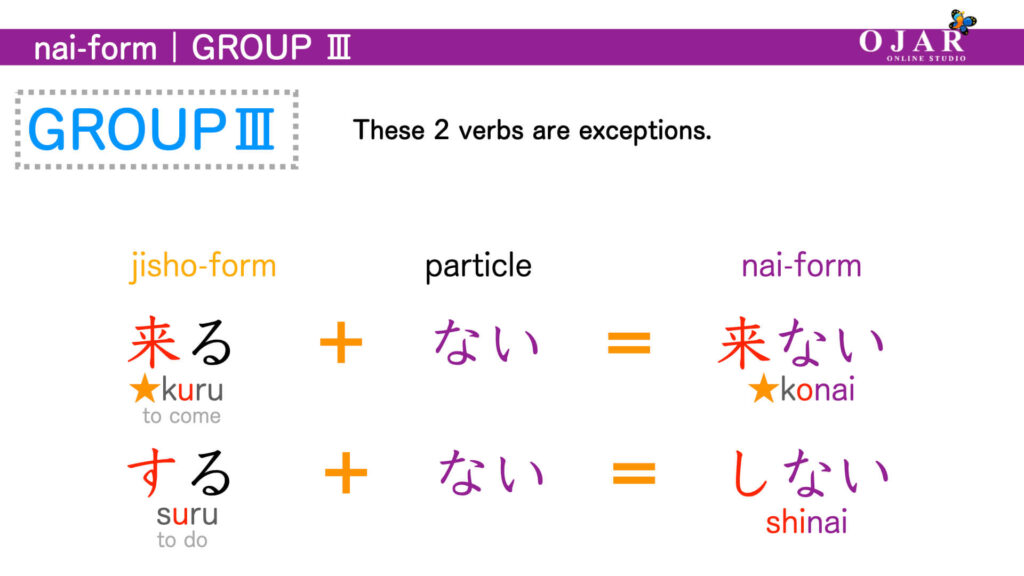
You just memorize Group Ⅲ verbs because there are only 2 verbs, “来る” and “する”. These verbs are exceptions.
| English | jisho-form | nai-form |
|---|---|---|
| to come | 来る kuru | 来ない konai |
| to do | する suru | しない shinai |
⚠️ CAUTION
Japanese people usually use kanji. You can see the different pronunciations of “来る kuru” and “来ない konai” even though it is used same kanji. Let’s use verbs and get used to the pronunciations little by little.
2. The Imperative Form in Japanese
■ The Imperative Form | Don’t do ~.
Let’s learn the imperative form. You can tell the differences of various nuances by using forms properly. Learn how to use the forms with Japanese expressions commonly used here.
・Don’t do ~! ~ ないで
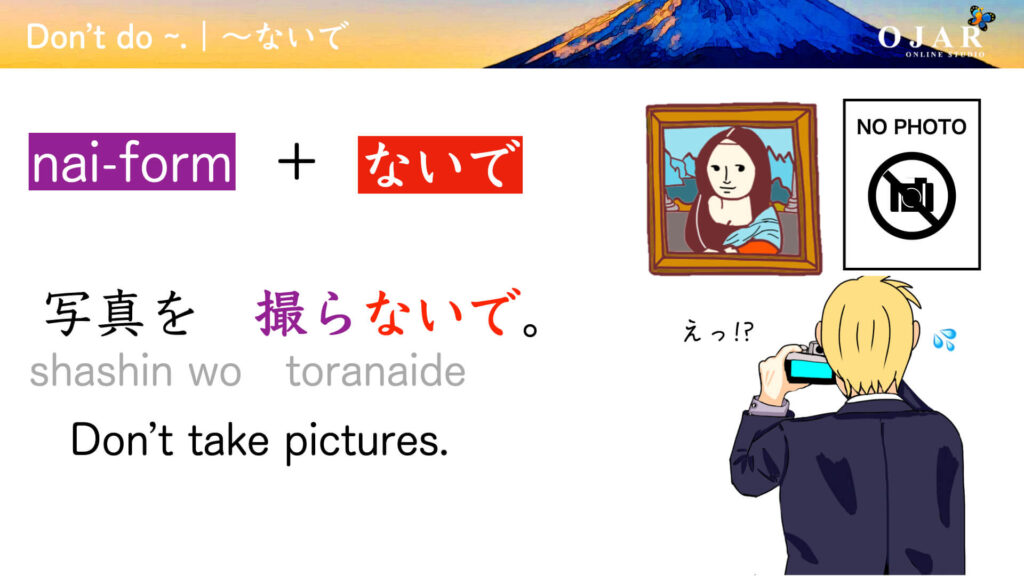
Let’s learn the imperative form “Don’t do ~.” here.
Don’t do ~ !” is “~ないで。” in Japanese.
This expression sounds like a commanding tone so you need to be careful when you use this form.
| Japanese | English |
|---|---|
| 触らないで。 sawaranaide | Don’t touch! |
| 飲まないで。 nomanaide | Don’t drink! |
| 撮らないで。 toranaide | Don’t take pictures! |
| しないで。 shinaide | Don’t do! |
| 行かないで。 ikanaide | Don’t go! |
・Don’t do ~, please. ~ないでね。
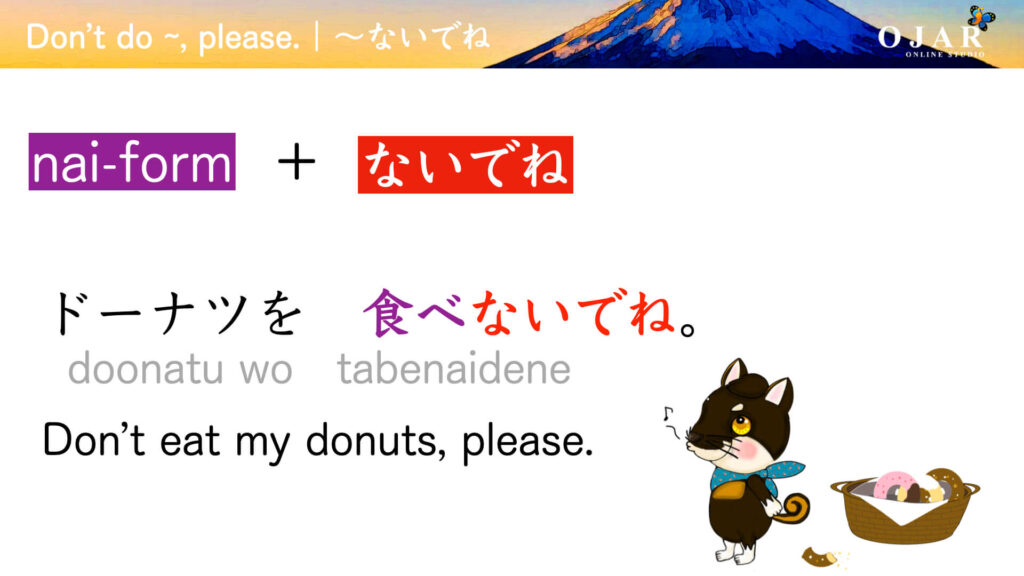
“~ないでね” means Don’t do ~, please.”.
You can give a casual and kind tone when you add “ね” to the imperative form. You can also use this form to younger people, your family members and children etc.
| Japanese | English |
|---|---|
| 心配しないでね。 shinpaishinaidene | Don’t be worried, please. |
| 忘れないでね。 wasurenaidene | Don’t forget, please. |
| 入らないでね。 hairanaidene | Don’t enter, please. |
| 食べないでね。 tabenaidene | Don’t eat, please. |
| 遅れないでね。 okurenaidene | Don’t be late, please. |
・Do NOT do ~! ~ないでよ!
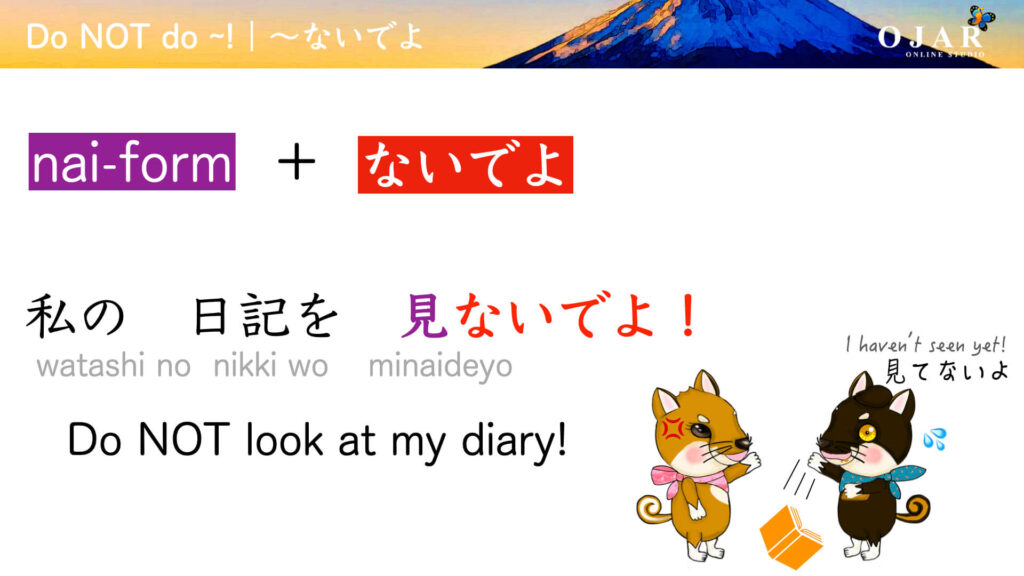
“~ないでよ” means “Do NOT do ~!”.
You can give an emphatic and unpleasant tone when you add “よ” to the imperative form. Especially, this form is feminine.
| Japanese | English |
|---|---|
| 押さないでよ! osanaideyo | Do NOT push me (it)! |
| 笑わないでよ! warawanaideyo | Do NOT laugh at me! |
| 来ないでよ! konaideyo | Do NOT come! |
| 見ないでよ! minaideyo | Do NOT look! |
| 言わないでよ! iwanaideyo | Do NOT tell! |
・DON’T do ~. ~ jisho-form + な!
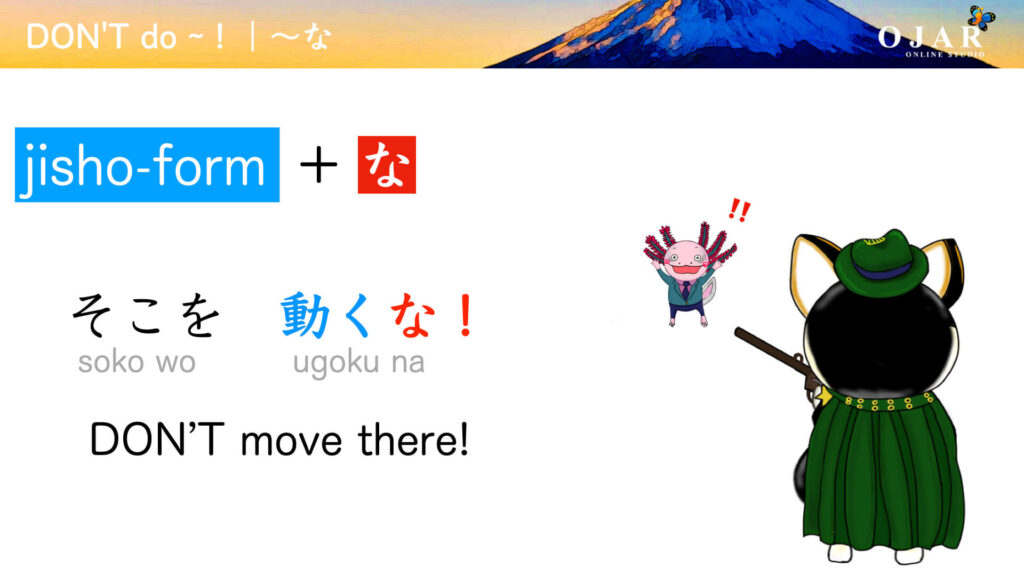
“isho-form + な!” means “DON’T do ~.”. “な” means “not”.
You can give a very commanding and dangerous tone when you use this form. Especially, this form is masculine.
| Japanese | English |
|---|---|
| 動くな! ugokuna | DON’T move! |
| しゃべるな! shaberuna | DON’T talk! |
| 寝るな! neruna | DON’T sleep! |
| 走るな! hashiruna | DON’T run! |
| 壊すな! kowasuna | DON’T break it! |
・Please don’t do ~. ~ないでください。
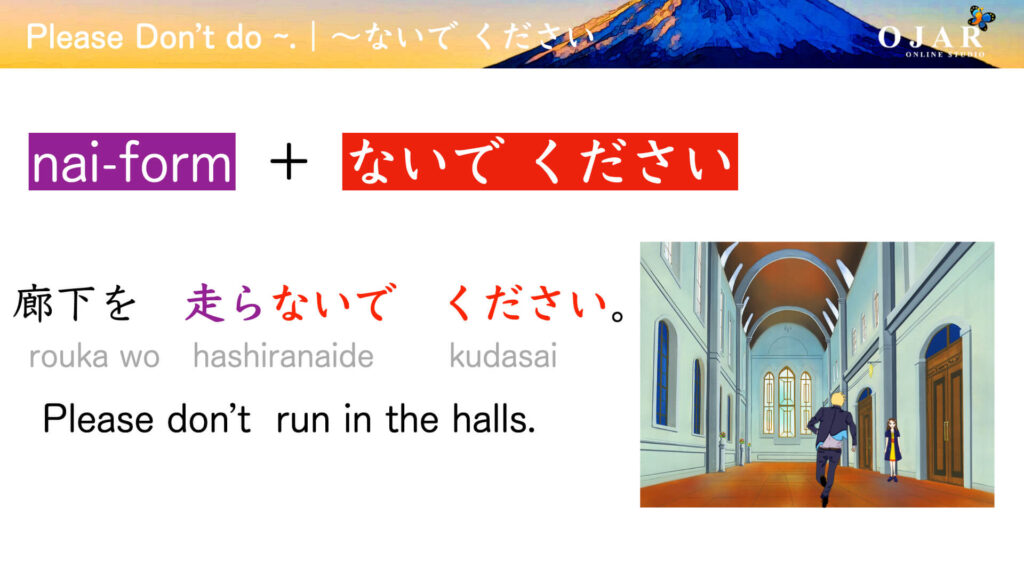
“~ないでください” means “Please don’t do ~”.
You can give a polite and formal tone when you add “ください” to the imperative form. You can also use this form to superior people, elder people, and customers etc. Nevertheless, this form is the imperative form so treat it carefully.
| Japanese | English |
|---|---|
| 開けないでください。 akenaidekudasai | Please don’t open. |
| 閉めないでください。 shimenaidekudasai | Please don’t close. |
| 座らないでください。 suwaranaidekudasai | Please don’t sit. |
| 置かないでください。 okanaidekudasai | Please don’t leave your things! |
| 捨てないでください。sutenaidekudasai | Please don’t throw sit away. |
You can learn more how to say prohibitions here!🐶
The Imperative Form | Exercise
Homework
Translate English into Japanese and comment below.
① Don’t cry.
💡Hint To cry is 泣くnaku.
② Please don’t turn off the light.
💡Hint To turn off is 消す kesu.
Okay, that’s all for today!
Good luck with your Japanese study.
Minna No Nihongo: Beginner 1, 2nd Edition (Japanese)
Customer Reviews:★★★★☆
Publisher : 3A CORPORATION; 2nd Edition (March 16, 1998)
THE NEXT LESSON is:
Minna no Nihongo 17 ② | Obligation and Permission “Must do” in Japanese
THE PREVIOUS LESSON is:
Minna no Nihongo 16 ② : Combining Sentences Using Adjectives

